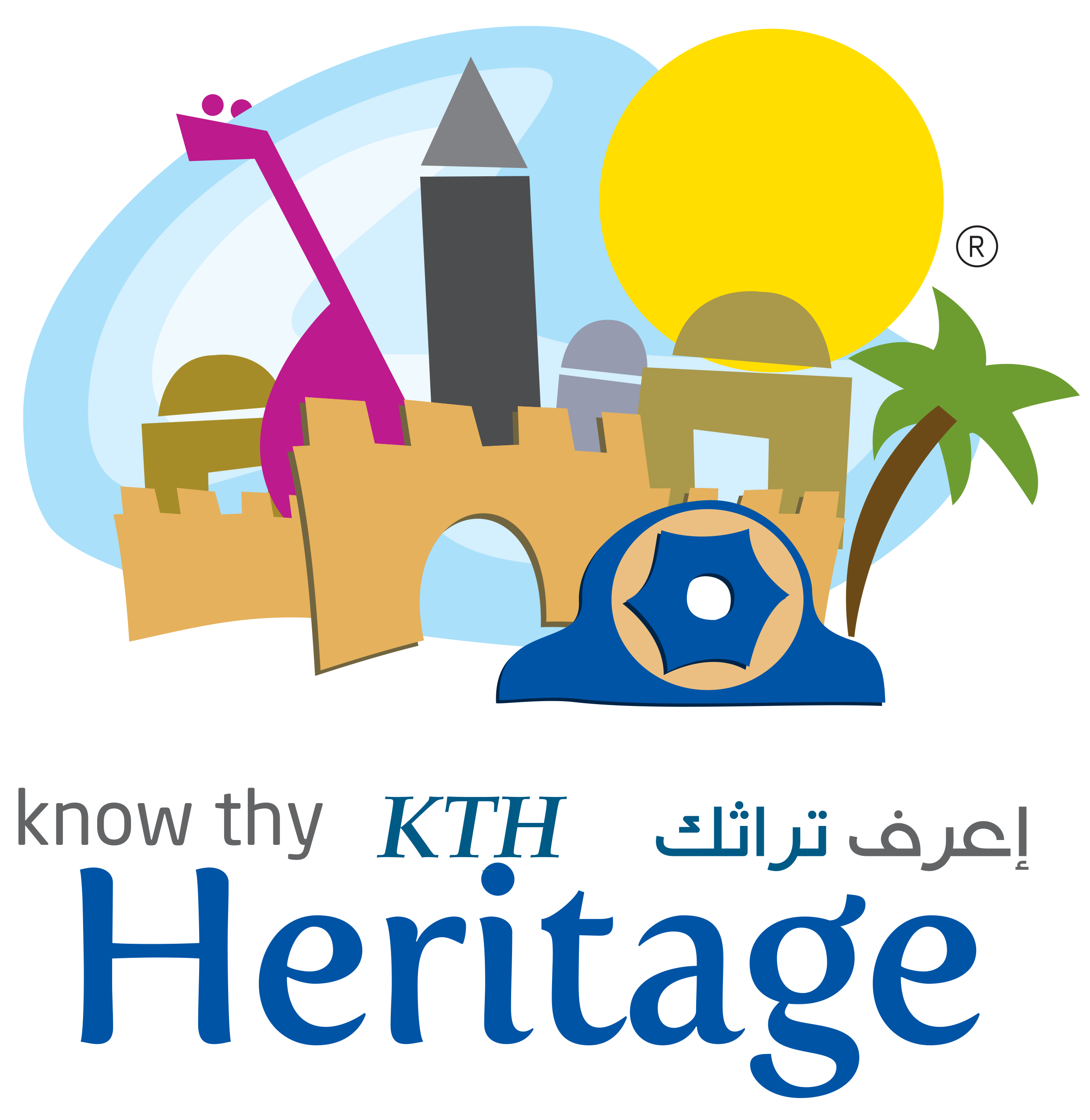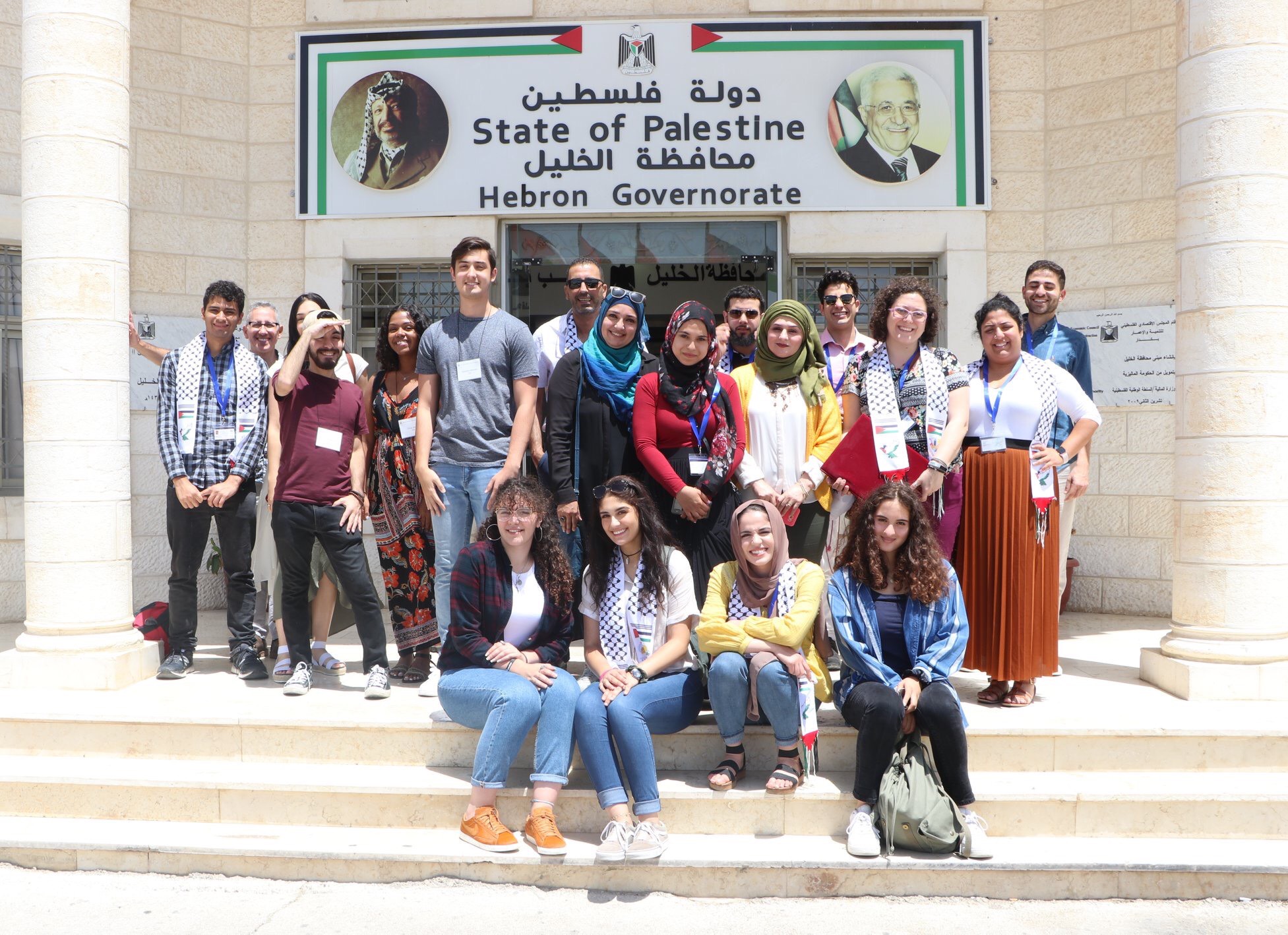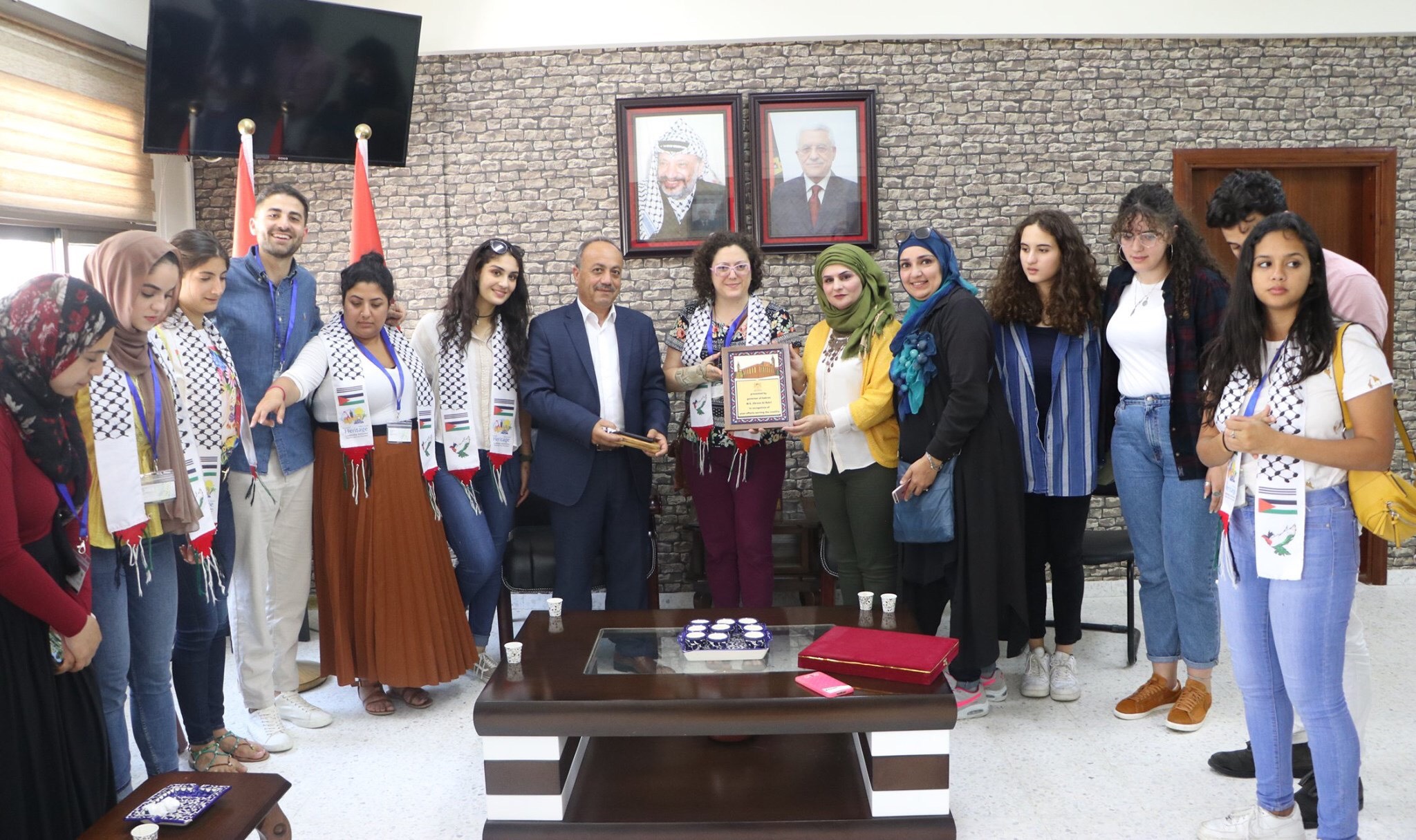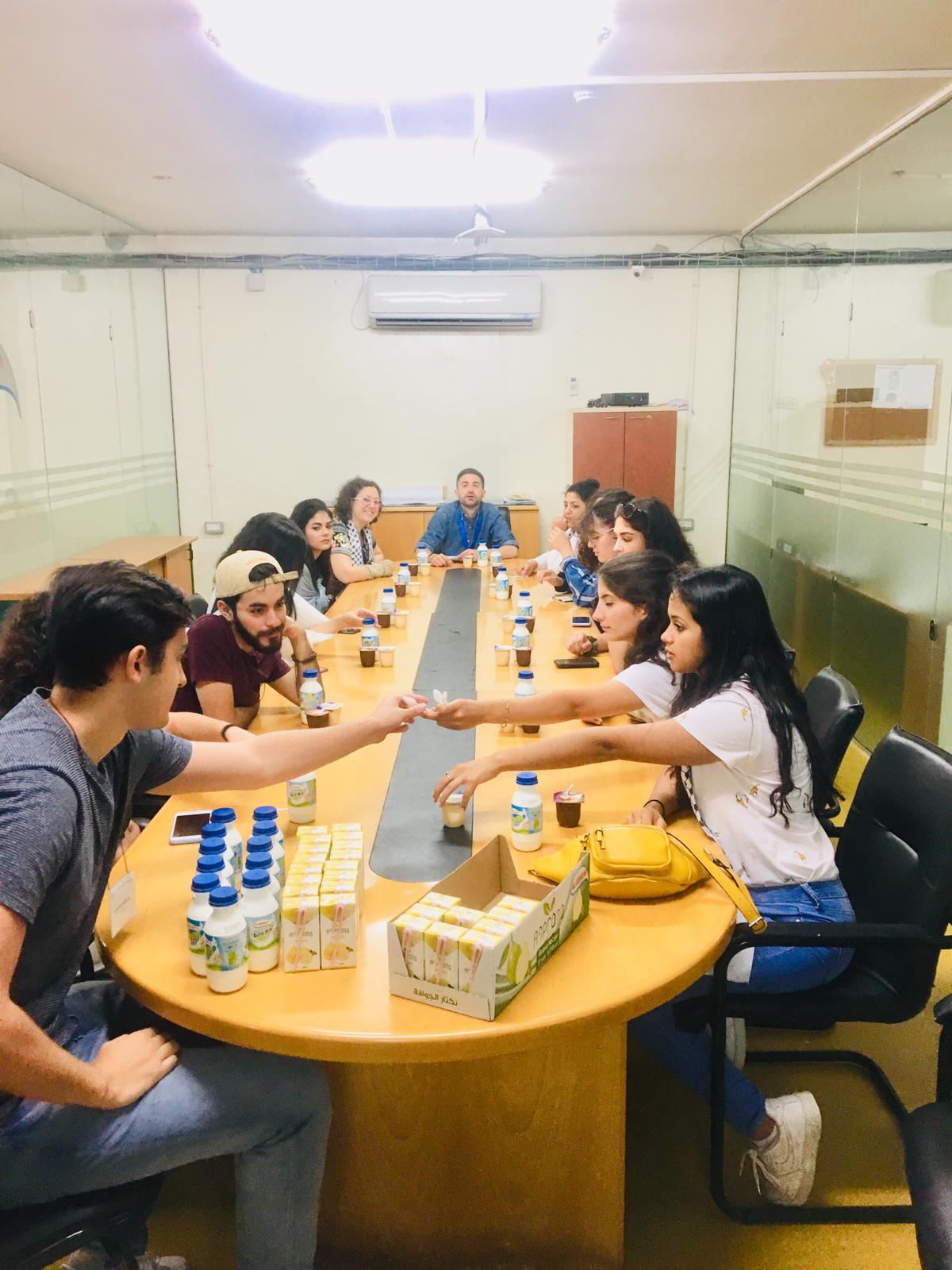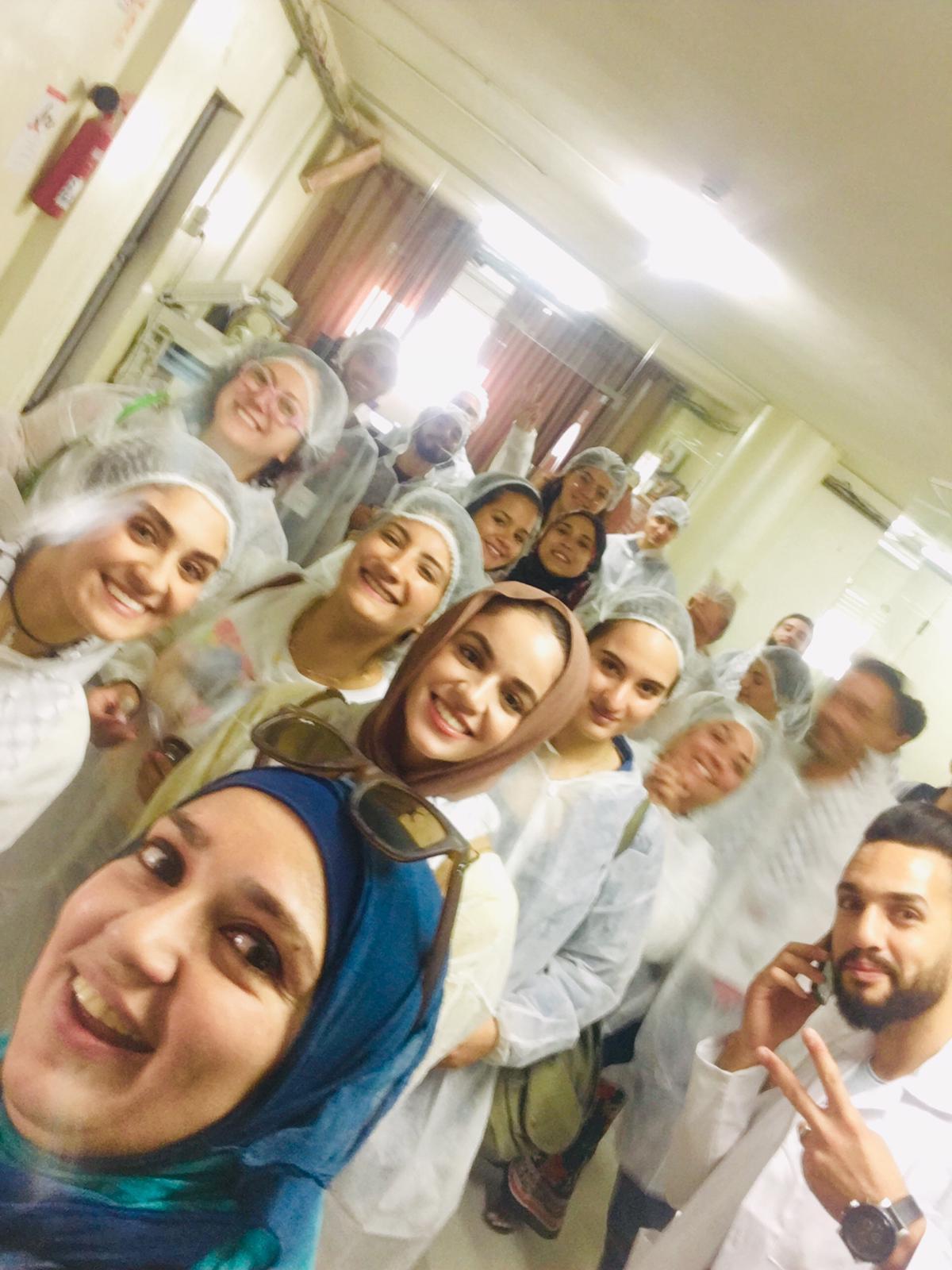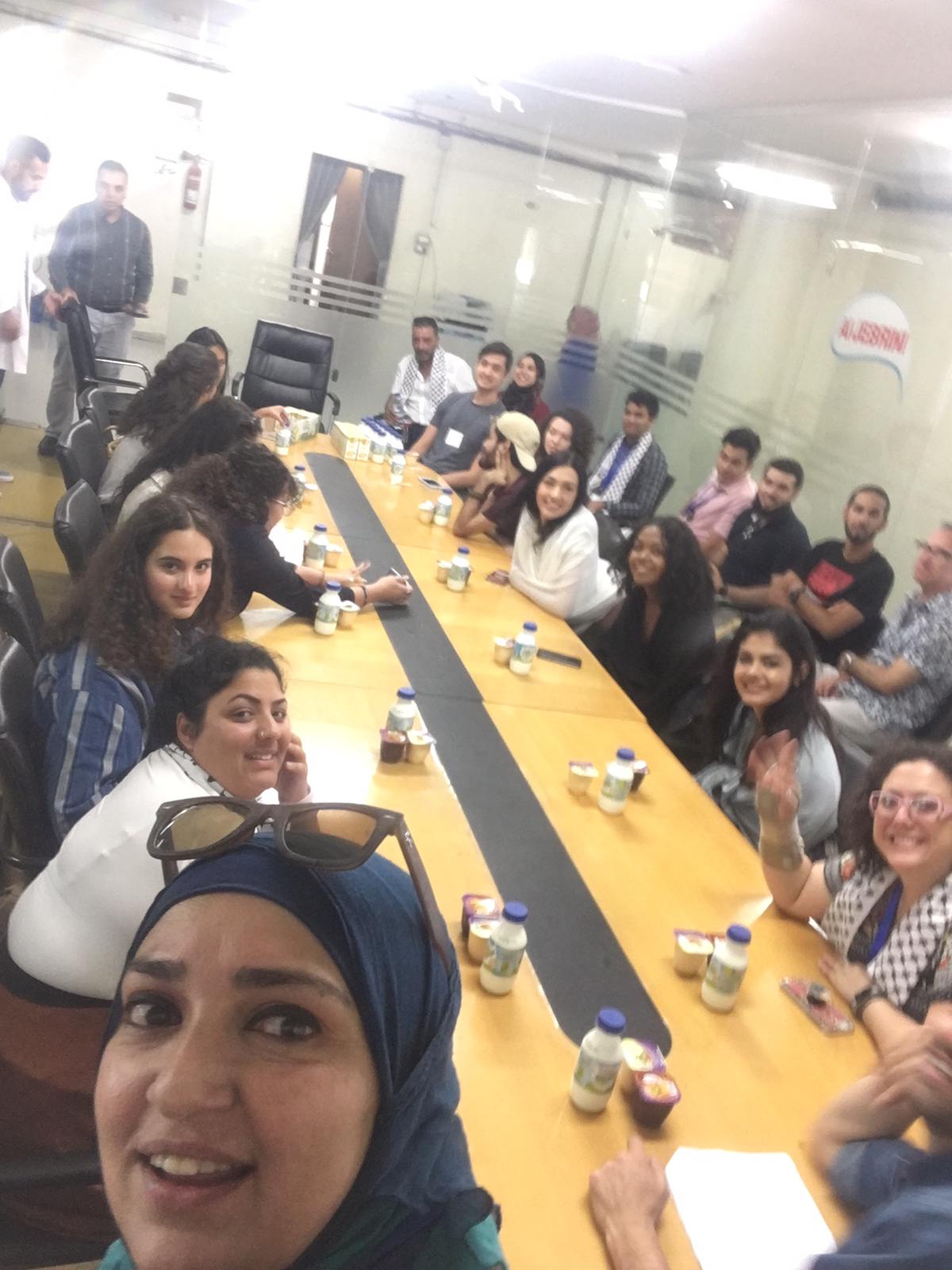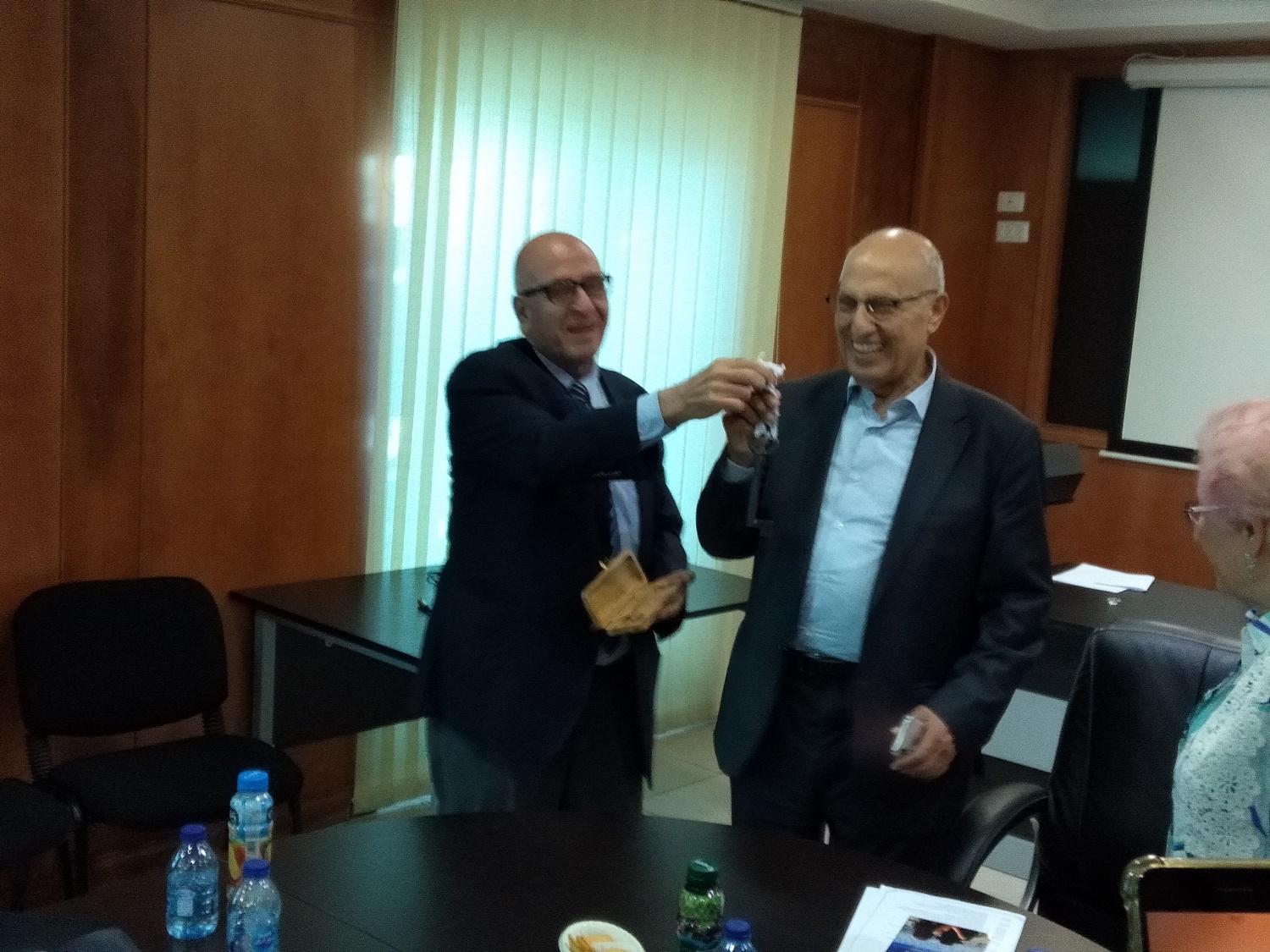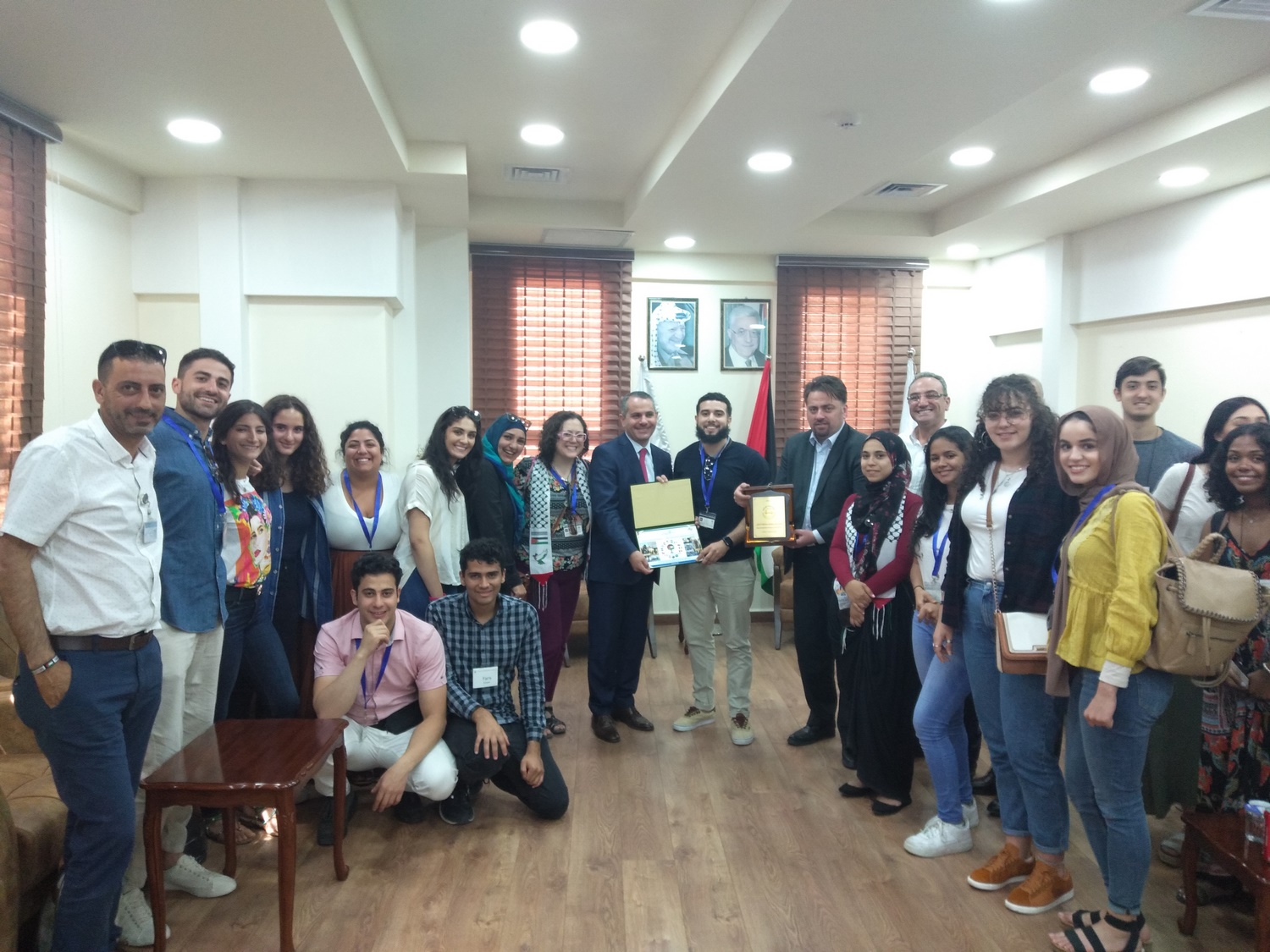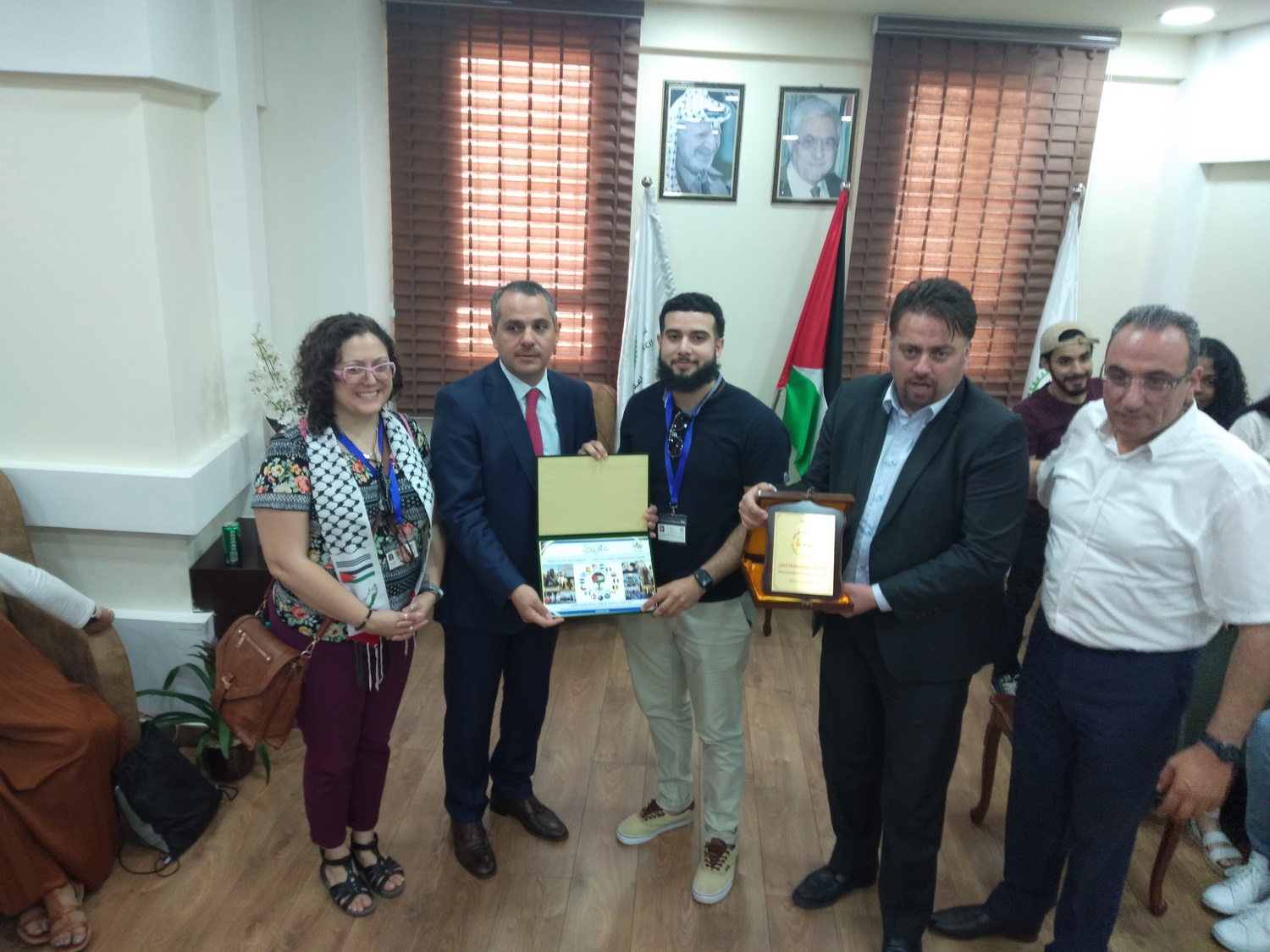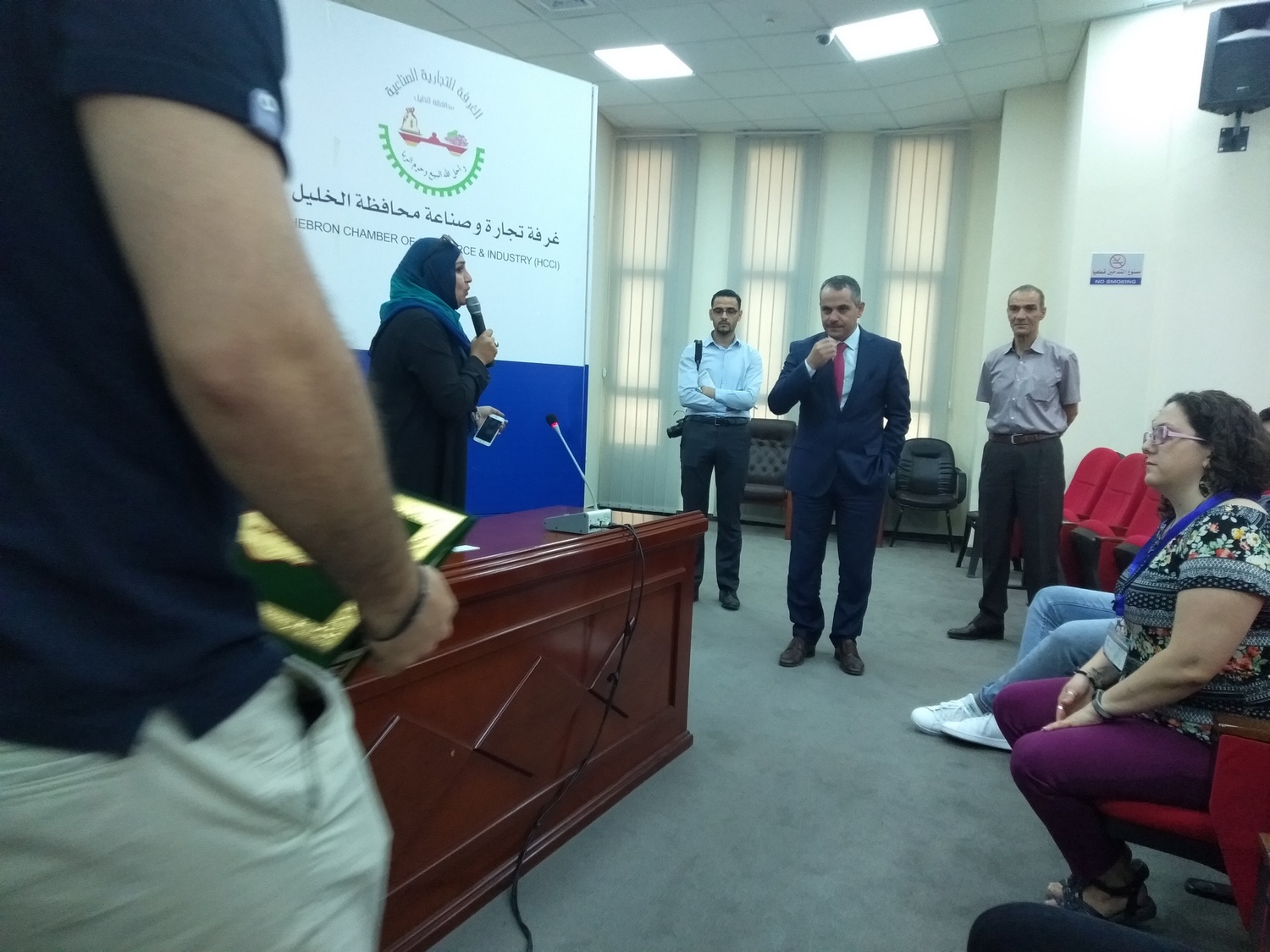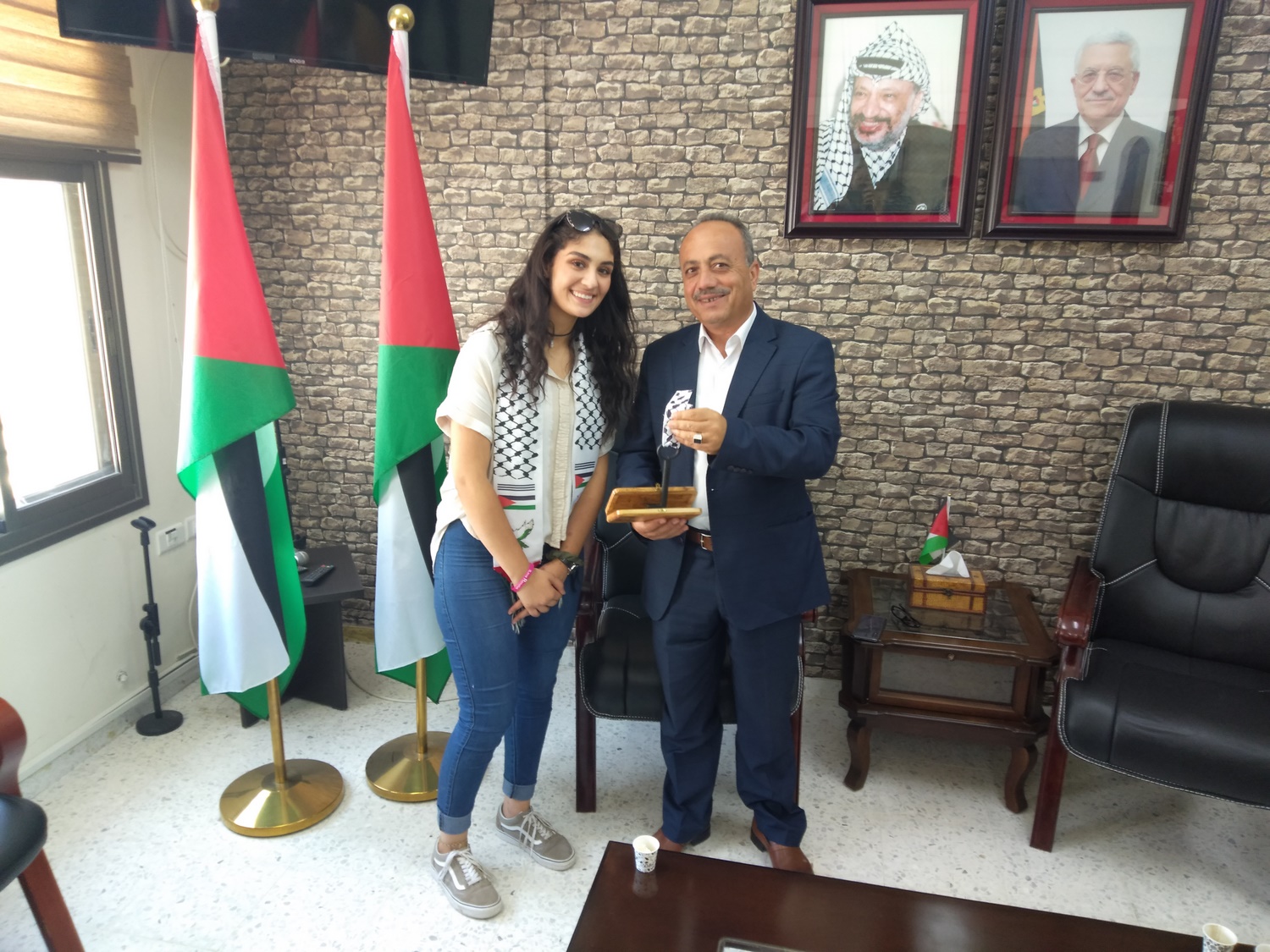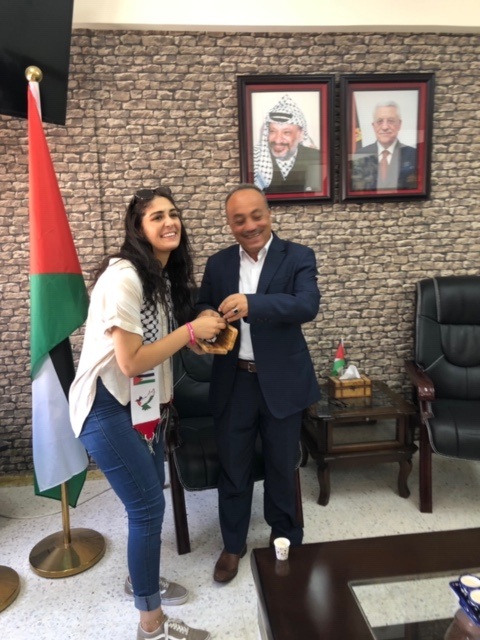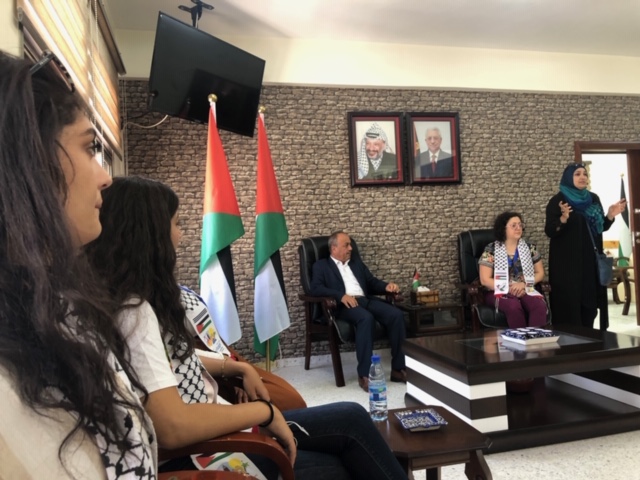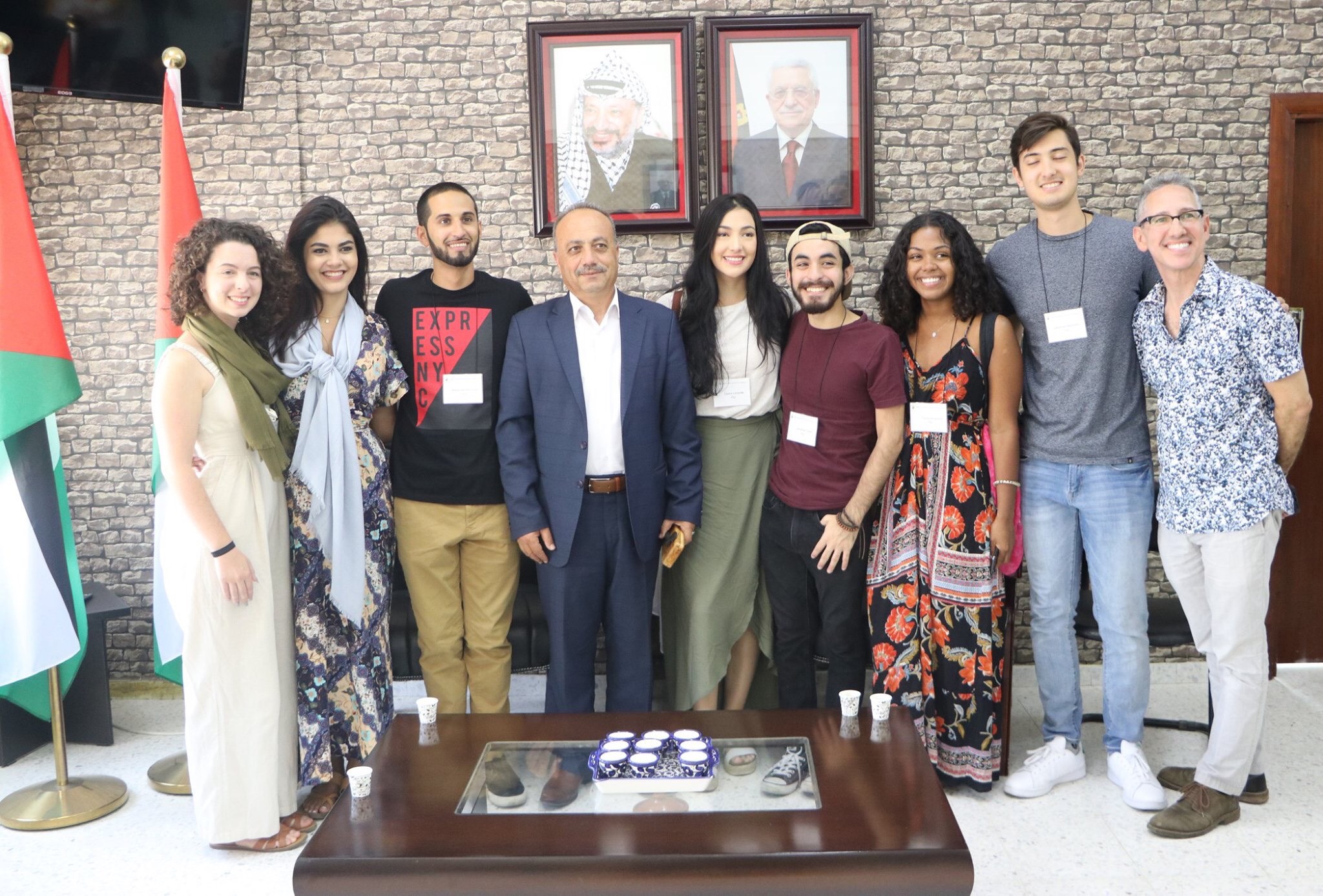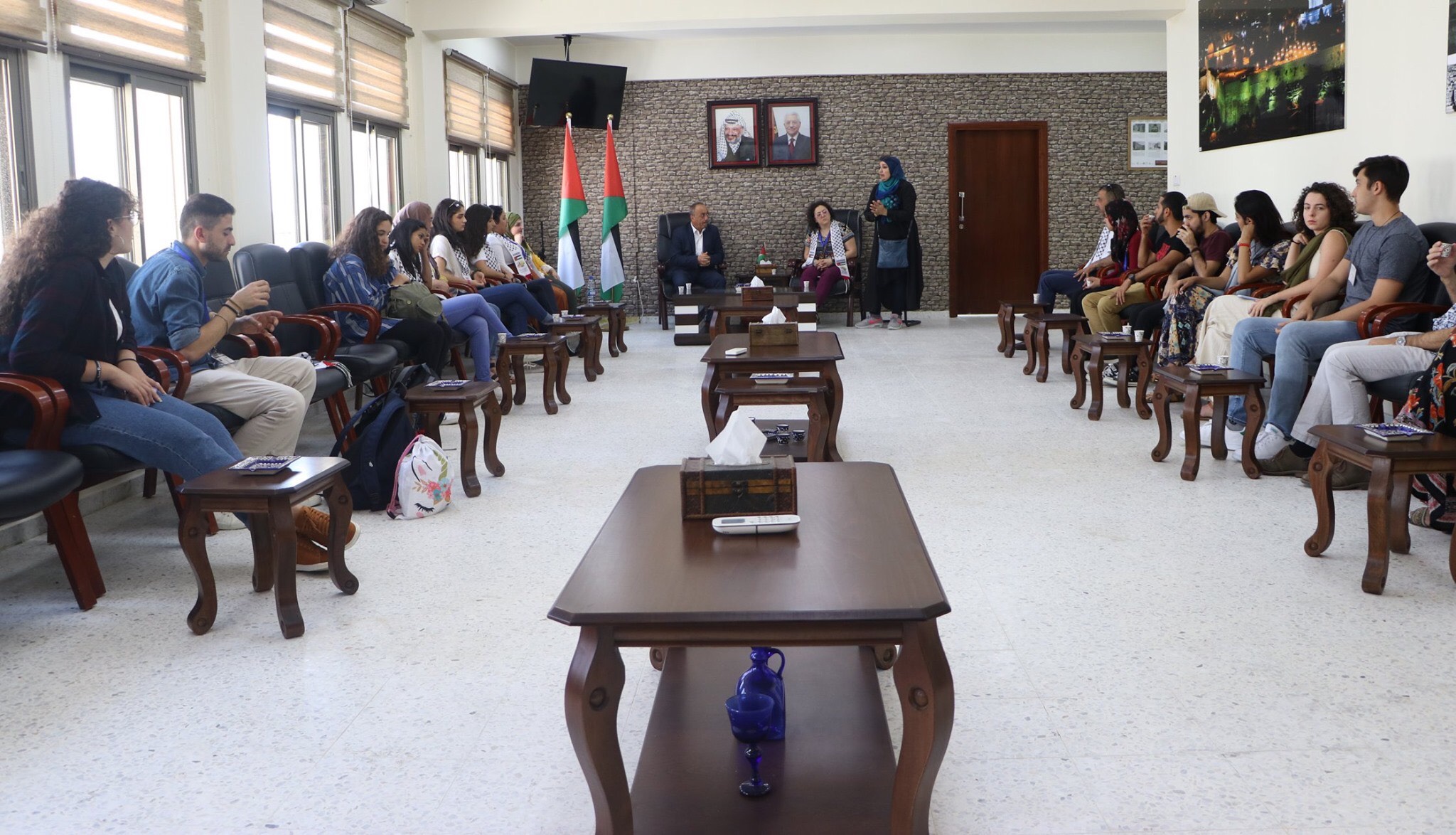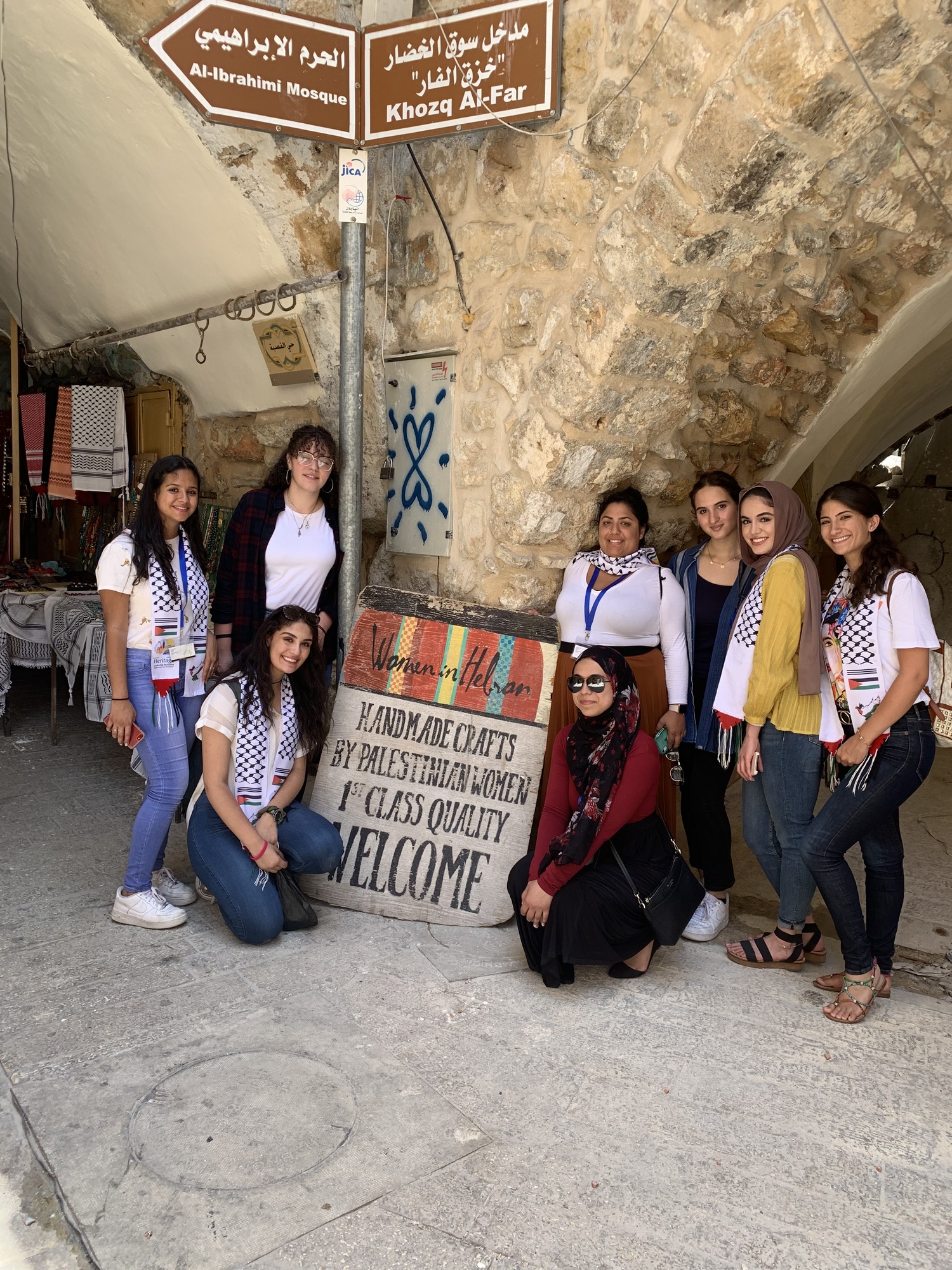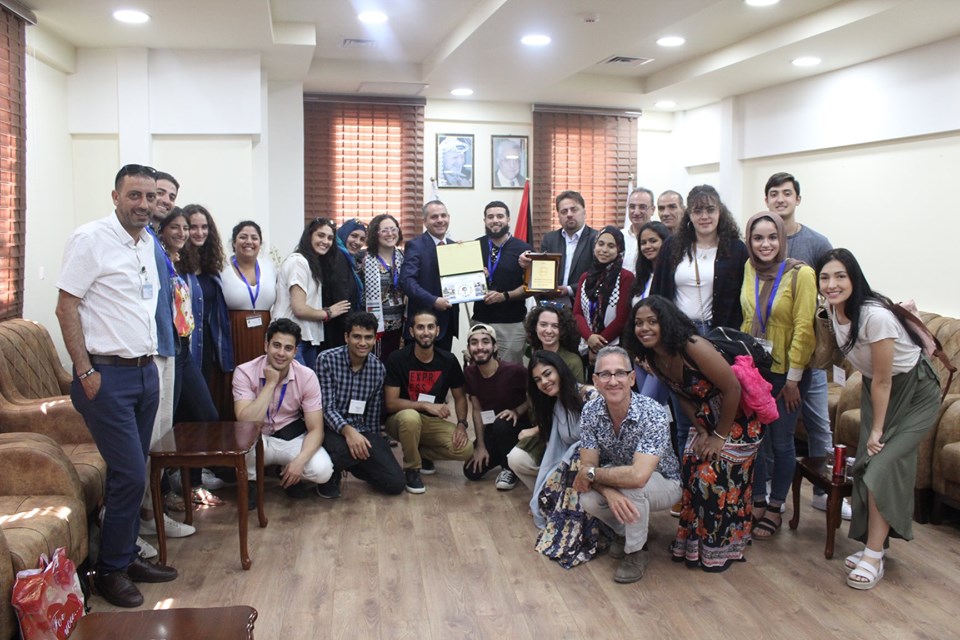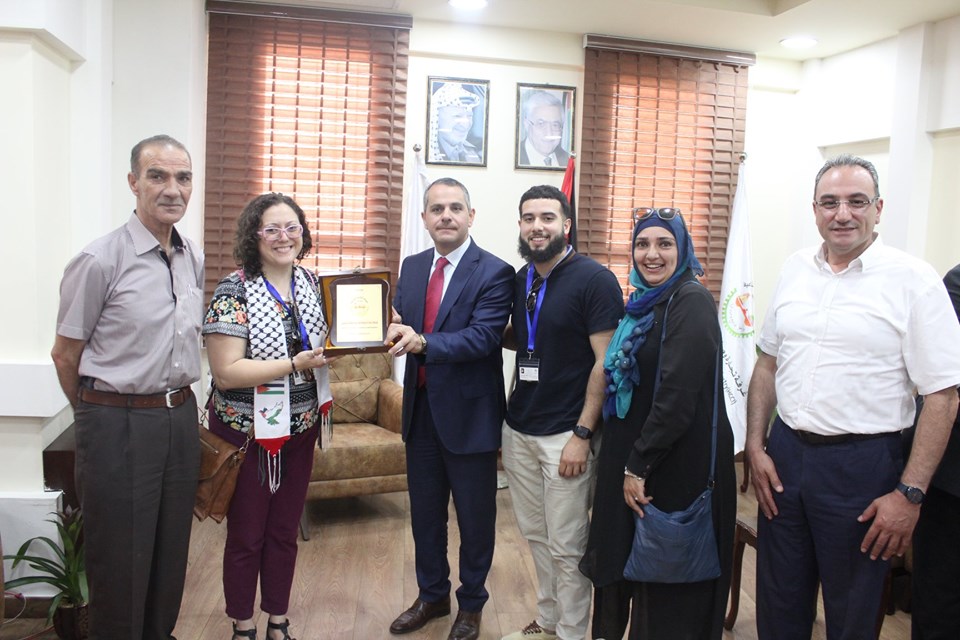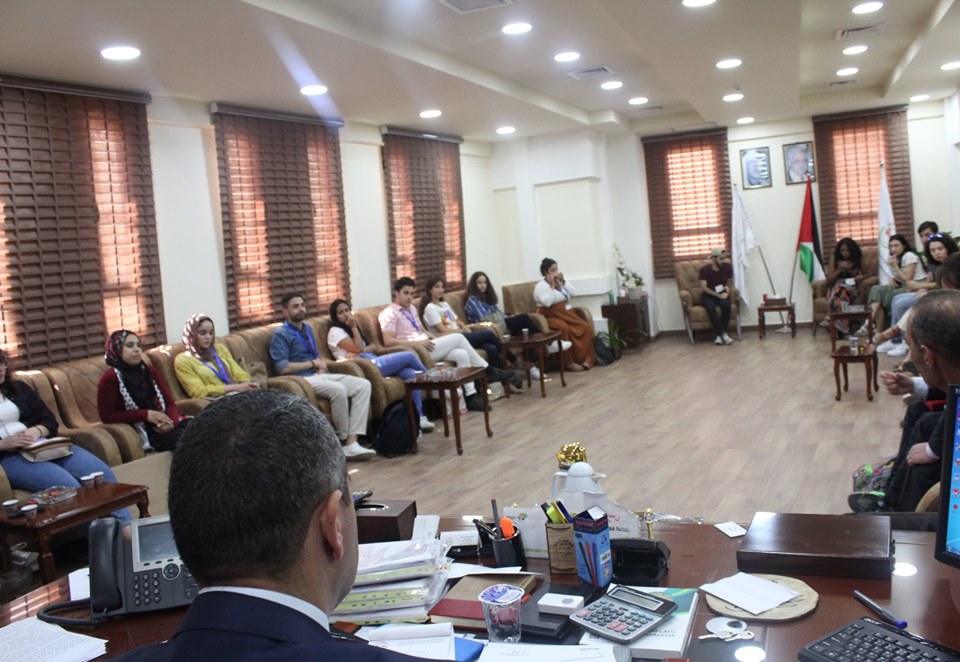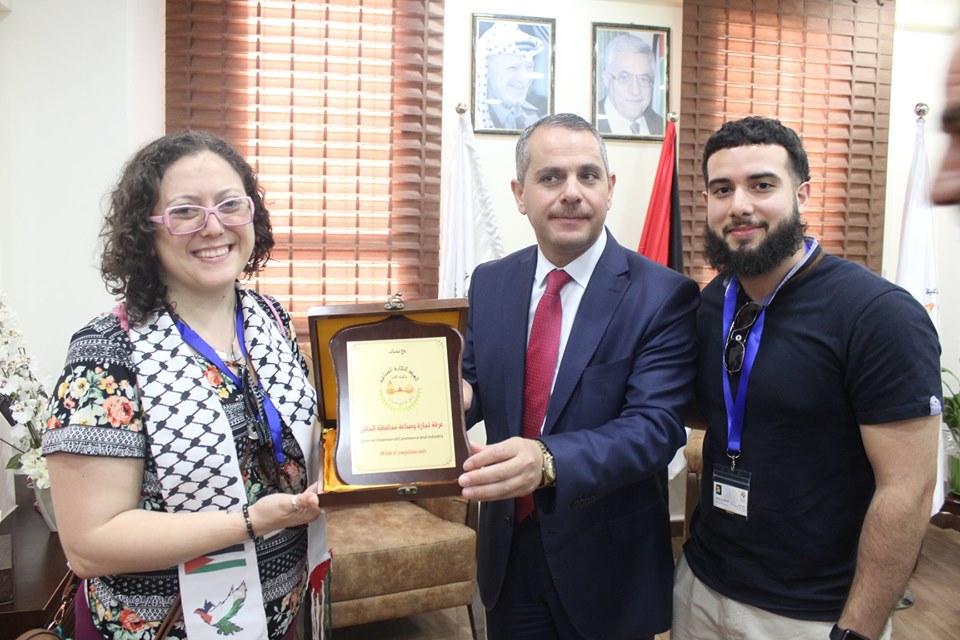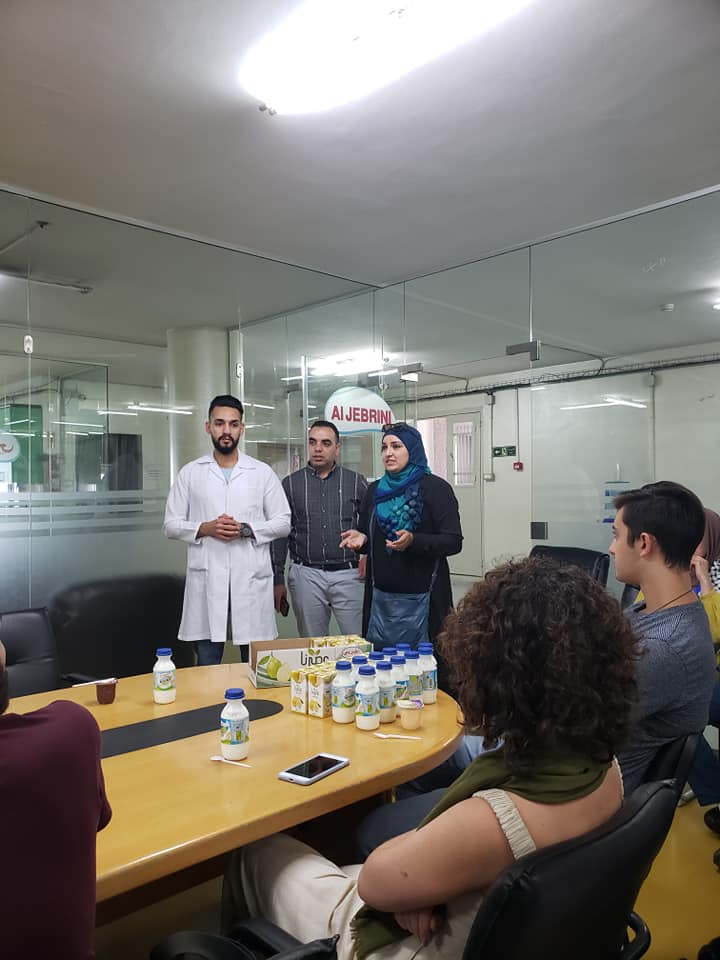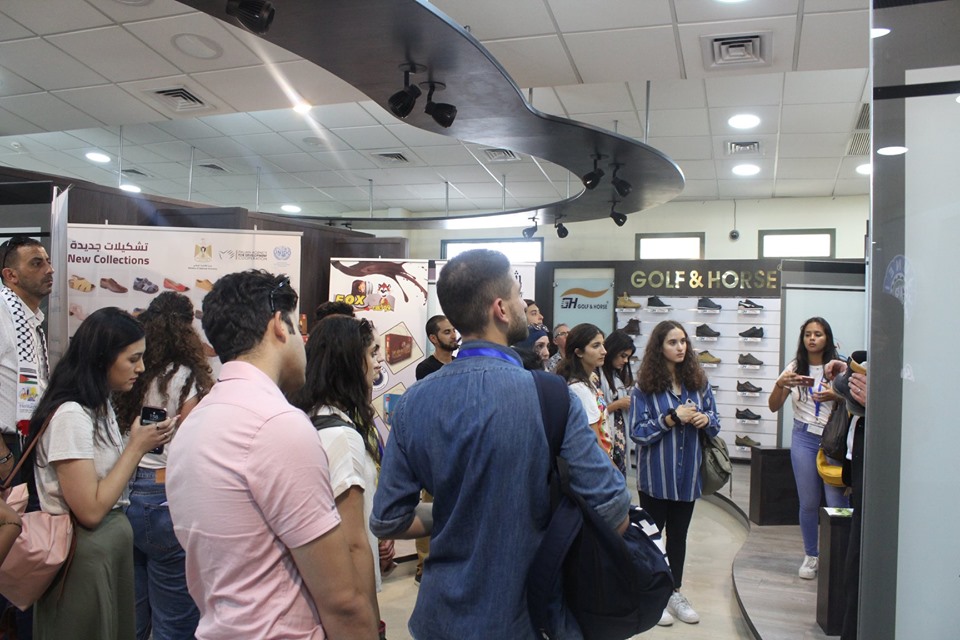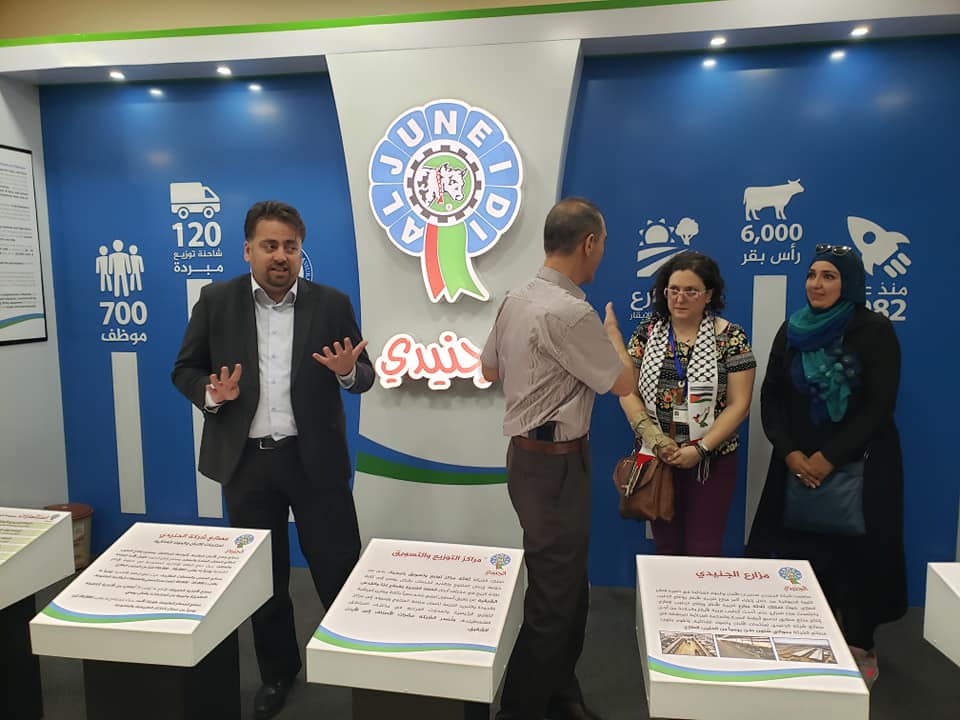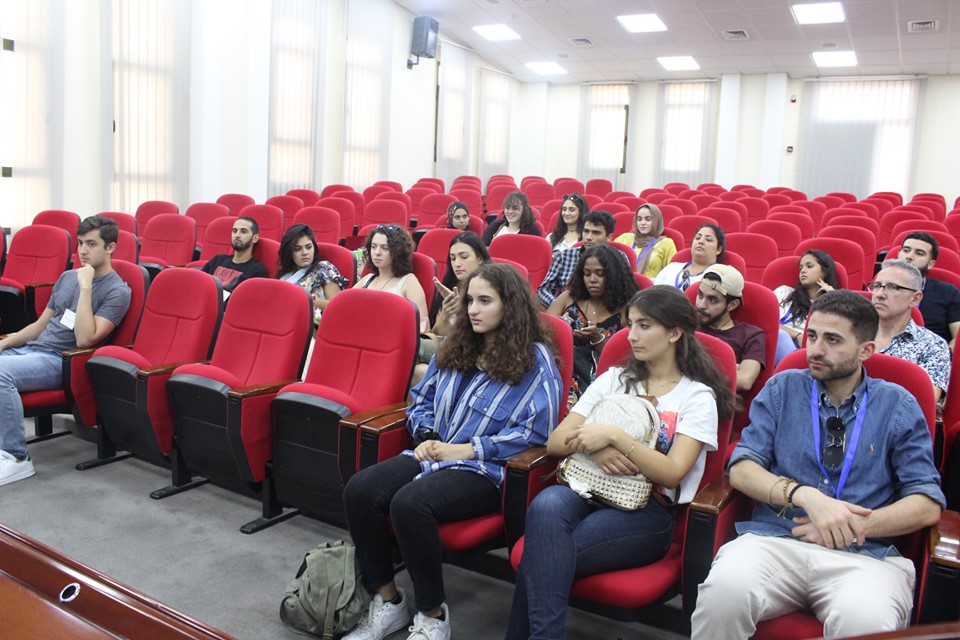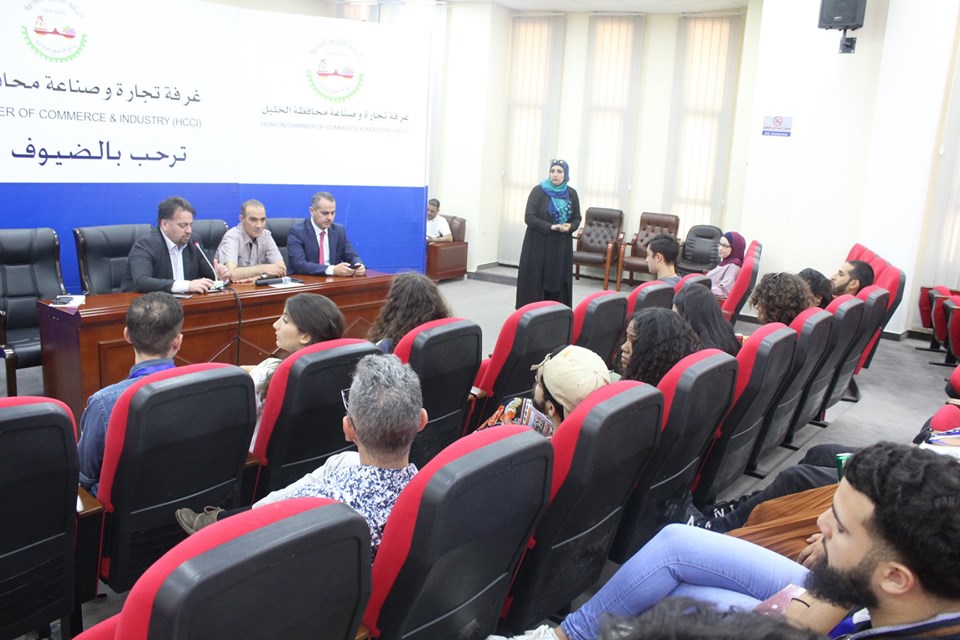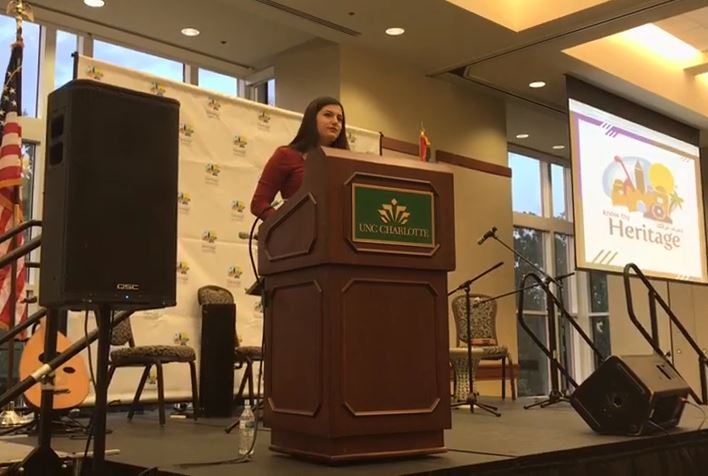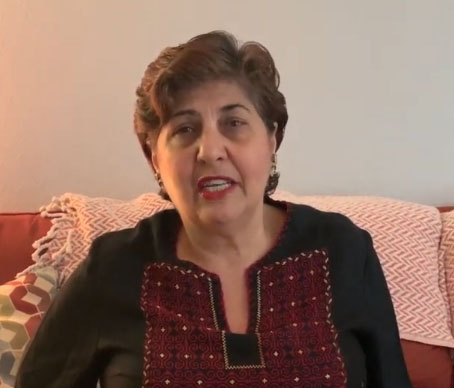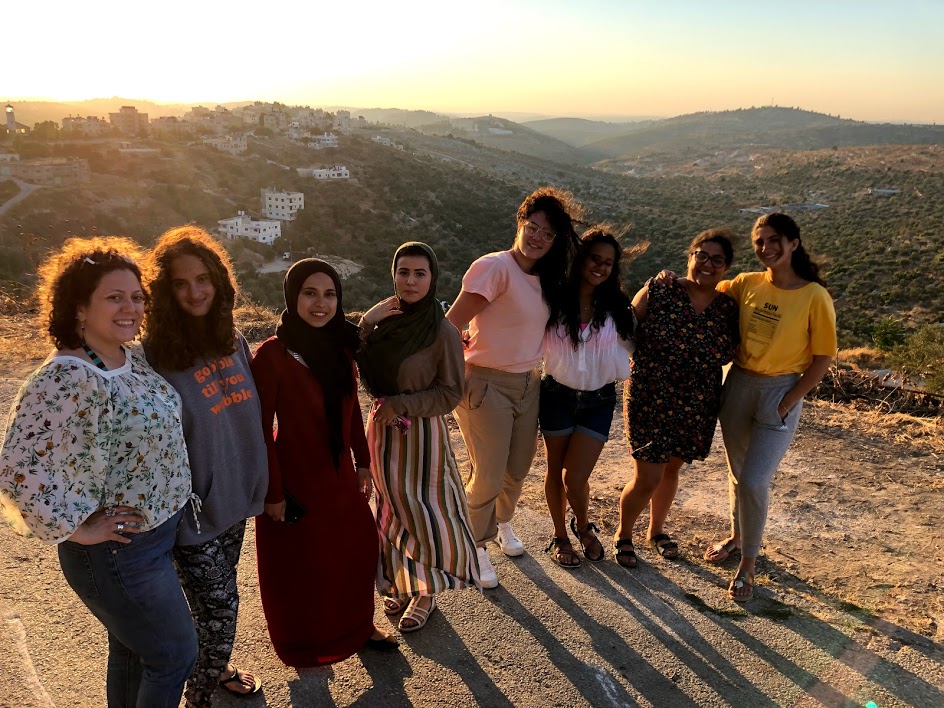Hebron, Palestine’s Biggest City, Holds Visible Demonstrations of the Struggle
By Bernardita Y.
Our day in Hebron began with a tour of a ceramic and glass blowing factory. As we walked in, we saw the men working on making beautiful pieces in the hot fire stove. In the back, artists painted ceramics with an ease and precision that inspired awe in all of us.
After our tour of the glass blowing and ceramic factory, Leena Hammoureh, our fabulous Hebron tour guide, took us to the Aljibrini yogurt factory where we got to see how they are made and got samples to take with us. It has been important to see how our Palestinian community continues to build and improve our production of goods and the Palestinian economic services.
Leena took us through a powerful tour of the Hebron Old City. Hebron is a special case in Palestine because it is a city where the occupation exists within its walls, right inside it. Through our tour, we were able to see this clearly and its impacts. We walked through busy markets that continue to exist despite Israeli settlers who occupy their streets, shutting down sections of markets that existed long before they arrived. The Israeli occupation relegates our Palestinian brothers and sisters to live under desperate conditions. Through the many streets and markets we walked, Leena shared stories of what Palestinians must deal with in order to persist living in their own homes and their own cities. In fact, often Israeli settlers buy their homes, build settlements, and block off streets, closing down their markets and using the streets as containers for their trash. Many in Hebron feel the impacts deeply of the way they are treated dismissively and violently. One man we met had a wife and child, and her pregnant wife was killed when she went out onto the roof of her home and was shot. Her unborn child managed to survive, but at the age of 5, was blinded when Israelis dropped acid on his face. He now deals with medical bills and limited access to economic growth because of the way Israeli settlers set up bureaucratic systems that limit Palestinians’ ability to prosper. While we cannot immediately change his circumstances, we were happy to be welcomed to his own and able to buy some of the beautiful products they make to make a living. We were honored to share some of our resources with families in Hebron like this.
During our tour, Leena took us to the Ibrahimi Mosque. Getting to the mosque itself was a painful and important experience as we had to go through an Israeli checkpoint in the middle of the city to get there. Not only was there an arbitrary checkpoint to go through, but we also saw how in the process of establishing their occupation, Israelis set up cameras inside the mosque in order to keep watch of Muslims praying. This felt like a glaring violation of our Muslim Palestinian community and their holy place, disturbing their personal moments of prayers.
We ended our visit in Hebron with a meeting with the Hebron Chamber of Commerce. The director general, Eng. Tareq Jalal Altamimi, and Nidal Taher Mahmoud Al – Mohtasib, vice president of the chamber walked us through various successful Palestinian businesses that continue to flourish our Palestinian community. We were honored to share a meal of Makhluben while vising the Chamber and an afternoon with the vice president of the Chamber of Commerce.
Upon returning to Ramallah, we had a chance to meet with Dr. Nail Shaath, the head of the PLO’s committee for Palestinian refugees in diaspora. It was encouraging to hear from Dr. Nabil about the flourishing Palestinians in diaspora that he has connected with and to hear the pride Palestinians in the homeland feel towards the Palestinians in Diaspora.
Our visit to Hebron was hard, but rich, and we are so excited for the opportunities we’ve had to share with communities in their own cities. We are excited to see what the rest of the trip brings us!
